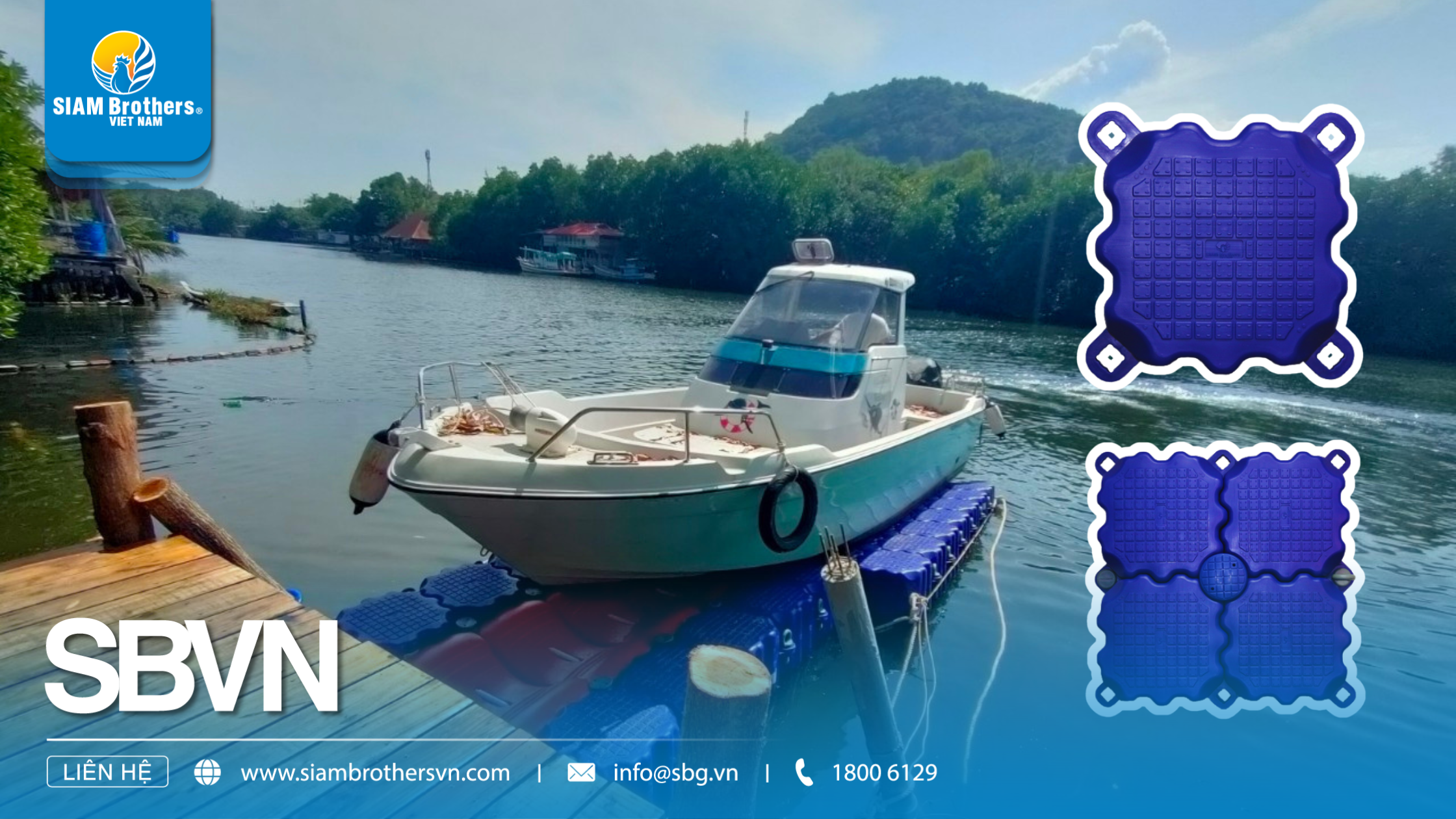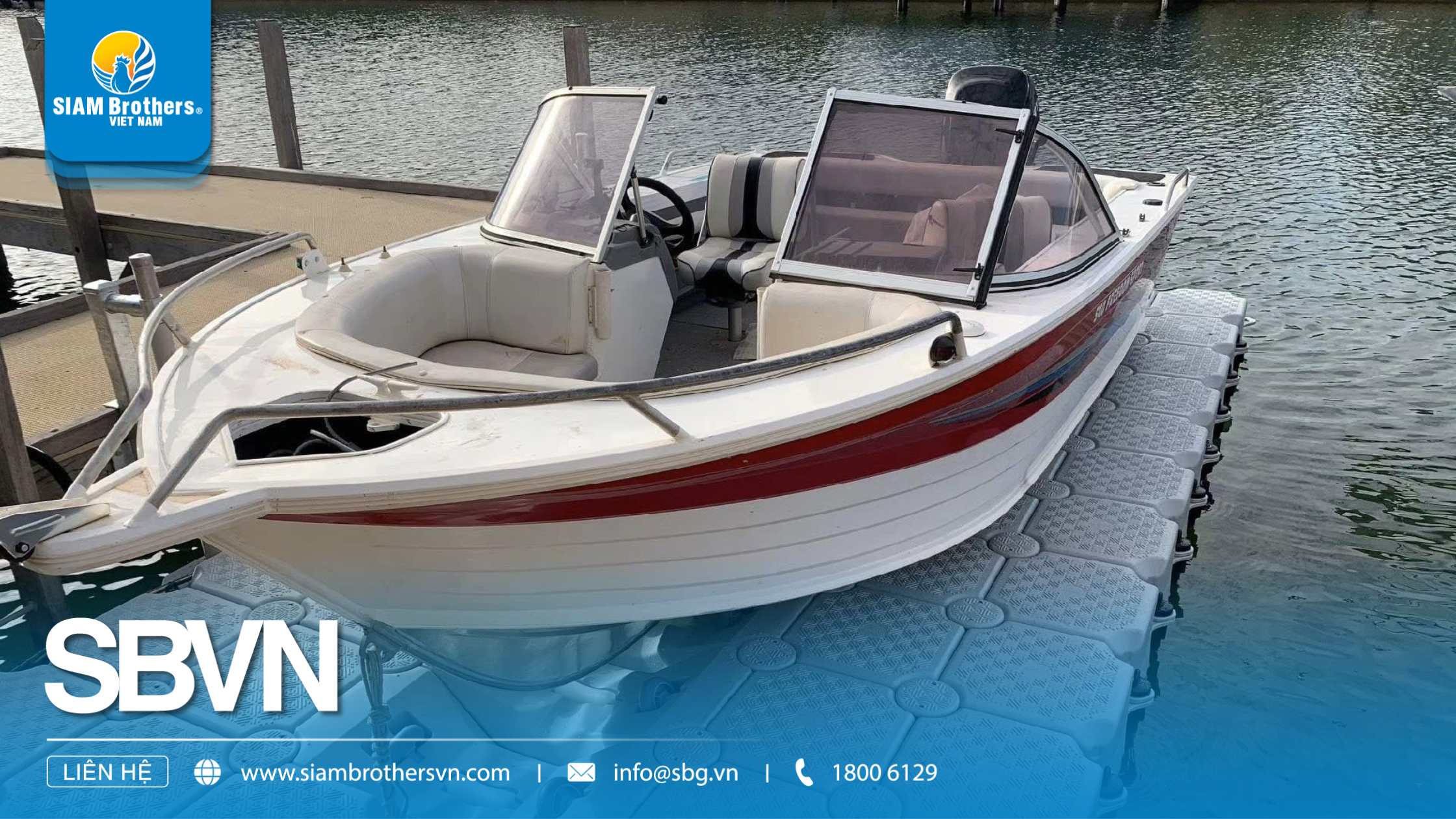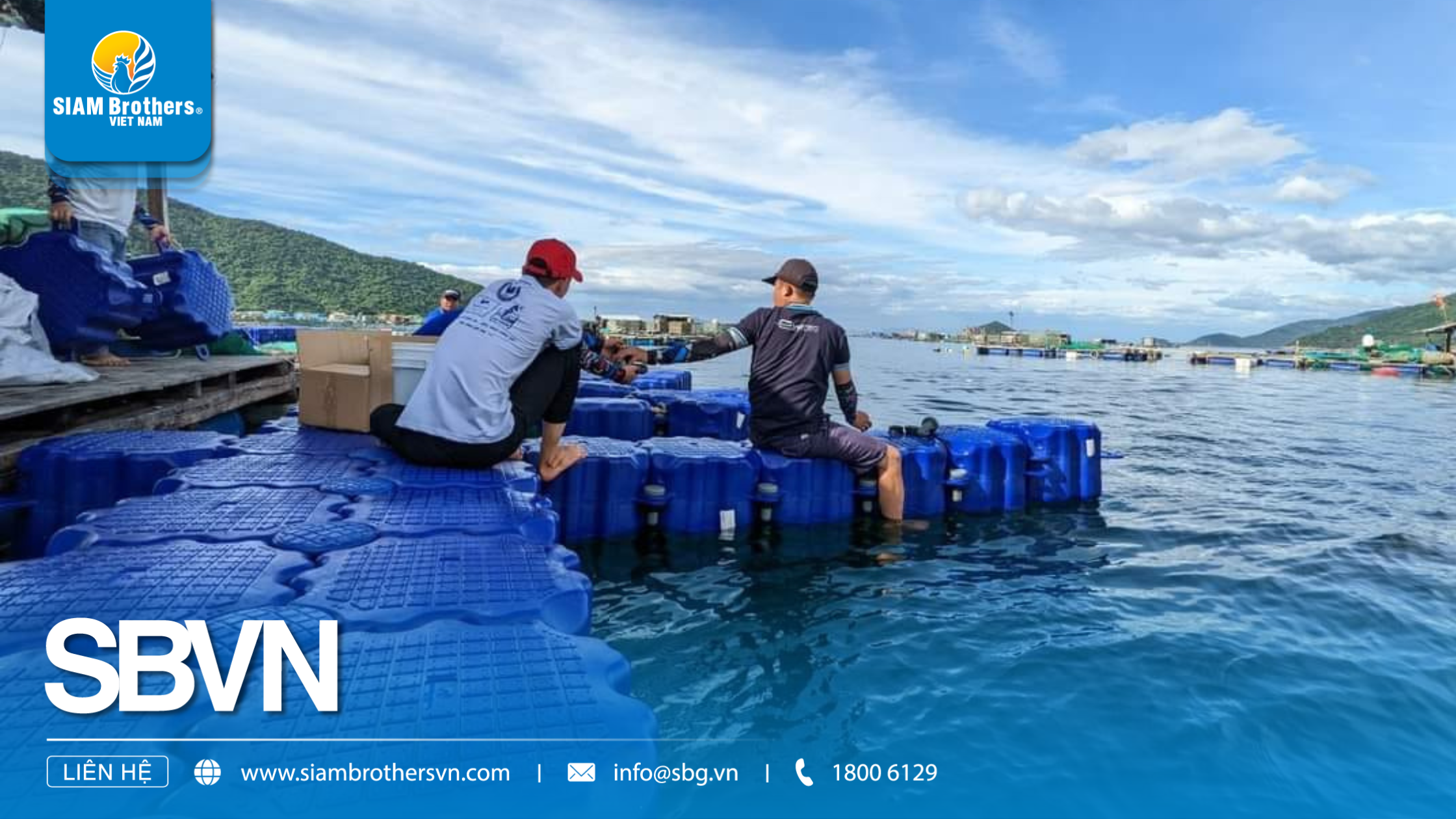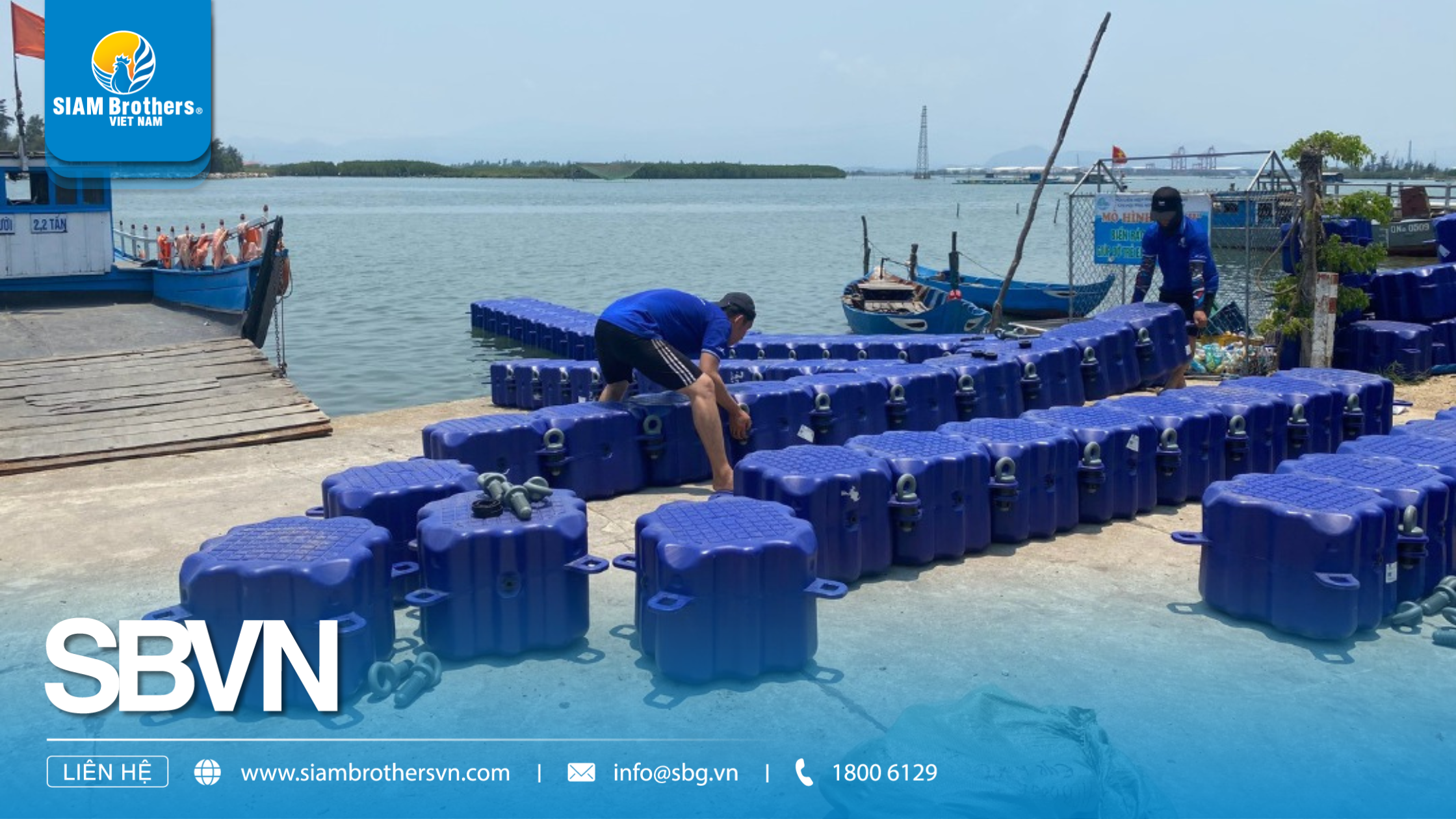Using the wrong canoe docking buoy can turn your vessel into a victim of rough seas! While selecting and installing a buoy may seem simple, it plays a crucial role in securing your boat safely. In this article, SIAM Brothers Vietnam will guide you through how to choose the right buoy based on real-world needs—from material and load capacity to technical criteria—along with a proper installation process. Whether you are a fishing boat owner, a canoe enthusiast, or a marine equipment distributor, this is a trusted technical guide you shouldn’t miss.
1. What Is a Canoe Docking Buoy?
A canoe docking buoy is a floating device used to help position and stabilize a canoe or boat when docked or anchored. The buoy marks the docking location, prevents collisions with other vessels, and serves as a connection point for anchors or ropes to keep the boat in place.
Key Benefits:
- Excellent load resistance and impact absorption when colliding with the boat or dock
- Waterproof and highly durable under saltwater and UV exposure
Potential Drawbacks:
- Higher cost compared to rubber or foam buoys
- Lightweight, so requires a stable anchoring system to hold position

2. How to Choose the Right Canoe Docking Buoy
2.1 Size and Buoyancy
-
Why it matters: The buoy must provide enough lift to hold the canoe in place under waves, wind, or strong currents.
-
Expert tip: Heavier canoes require larger buoys with matching buoyant volume. SIAM Brothers VN recommends multipurpose HDPE buoys for high loads. Avoid undersized buoys to save money—it can compromise safety.
2.2 Material and Durability
- Why it matters: Docking buoys are exposed to saltwater, intense sun, and frequent collisions.
- Expert tip: Prioritize virgin HDPE plastic or foam-core composite for UV, chemical, and impact resistance. Avoid low-quality materials prone to rotting or cracking.
2.3 Impact Resistance
-
Why it matters: Collisions during docking are inevitable. Low-resilience buoys can damage your canoe.
-
Expert tip: Choose thick, smooth-surfaced buoys with excellent shock absorption.
2.4 Ease of Installation and Replacement
- Why it matters: Installing a canoe docking buoy should be quick and hassle-free.
- Expert tip: Look for models with built-in rope eyes, anchor rings, or standard connectors for easy attachment and replacement.
2.5 Fit for All Purposes
- Why it matters: Each canoe type—recreational, fishing, or sport—requires a different buoy setup.
- Expert tip: For offshore canoes, opt for high-drift resistance buoys. Nearshore vessels can use standard models.

3. Canoe Docking Buoy Installation and Securing Guide
3.1 Preparing Equipment and Docking Location
Before starting the installation process, ensure the following conditions:
- Identify the docking area: Choose calm waters, away from strong currents or large waves.
- Prepare necessary tools: Anchor rope (preferably high-strength ropes from SIAM Brothers), metal anchors, shackles, and canoe docking buoys of the correct size.
- Inspect the buoy: Ensure the buoy has no punctures or leaks and the attachment eyelets are intact.
3.2 Step-by-Step Canoe Docking Buoy Installation
Step 1: Tie the Anchor Rope to the Main Anchor
- Use secure knots like the bowline knot or clove hitch to attach the rope to the anchor.
- Make sure the rope is long enough for the anchor to reach the seabed at a safe depth.
Step 2: Attach the Buoy to the Anchor Rope
- Slide the buoy onto the rope, about 1–2 meters from the anchor.
- Use a metal ring or tie directly to the buoy’s built-in eye if available.
Purpose: Helps the buoy float to mark the anchor location and keeps the rope afloat, preventing it from tangling with the canoe’s propeller.
Step 3: Secure the Rope to the Canoe Bow
- Firmly tie the rope’s other end to a mooring cleat or ring on the canoe.
- Adjust the rope’s length and tension to ensure the canoe doesn’t drift too far or too close to shore.
Step 4: Final System Check
- Observe the buoy’s position and buoyancy.
- Check for slack or excessive tension on the anchor rope.
- Ensure all knots and joints are firmly secured.

Pro Tips for Installing a Canoe Docking Buoy
- Add a secondary marker buoy if anchoring in crowded areas for better visibility.
- Use marine-grade anti-corrosion ropes for long-term durability in saltwater.
- During stormy seasons, increase the number of buoys and anchors for enhanced safety.
4. How to Properly Tie a Canoe Docking Buoy and Anchor
4.1 Pre-Mooring Checklist
Before tying the buoy and anchor, confirm the following:
4.2 How to Secure a Canoe Docking Buoy
Step 1: Determine the Buoy’s Position on the Anchor Rope
- Position the buoy about 1–2 meters from the anchor to clearly mark the mooring spot.
- Ensure it is tied to the floating section of the rope to remain visible above water.
Step 2: Use the Right Knot
- Use a bowline knot or anchor hitch to securely fasten the buoy.
- Avoid temporary or single knots as they may loosen in strong waves.
Step 3: Test Buoyancy and Flexibility
- After tying, lightly pull the rope to test whether the buoy stays afloat in the correct position without obstruction.
- Ensure the canoe docking buoy maintains balance and does not sway excessively, which could affect canoe stability.
4.3 Proper Anchor Tying Technique
Step 1: Attach Rope to the Anchor
- Thread the rope through the anchor eyelet and tie a double figure-eight knot or a marine-grade anchor knot.
- Tighten and manually test for secure tension.
Step 2: Secure the Other End to the Canoe
- Attach it to the cleat on the bow or the deck using a stainless steel ring or spring hook.
- This allows for quick release and added safety.
Step 3: Anchor Deployment
- Lower the anchor slowly to prevent tangling or snagging on the seabed.
- Monitor the canoe’s movement to ensure the anchor-rope-buoy system functions correctly.
Safety Tips for Canoe Docking Buoys and Anchoring
- Always check knots and connection points before leaving the canoe.
- In harsh weather, use additional buoys for improved balance.
- Replace anchor ropes periodically, especially after long trips or prolonged saltwater exposure.

5. Frequently Asked Questions About Canoe Docking Buoys
5.1 Are canoe docking buoys required when anchoring a vessel?
Yes. Canoe docking buoys are essential not only for marking the anchor point but also for keeping the anchor rope afloat, reducing the risk of entanglement with underwater objects. They are a crucial component in all anchoring scenarios, especially in deep waters or busy waterways.
5.2 What type of buoy should I choose for rough sea conditions?
- In rough seas, it's best to use round-shaped canoe docking buoys made from highly elastic materials such as HDPE or PVC. These materials offer excellent impact resistance and durability.
- SIAM Brothers Vietnam provides a range of specialized offshore buoys with integrated stainless steel anchor eyes for maximum safety and performance.
5.3 Can one docking buoy be used for multiple types of canoes?
- Yes, but you must consider the canoe’s size and weight to select a buoy with adequate buoyancy.
- For small canoes under 5 meters, a medium-buoyancy dock buoy is sufficient. However, for touring canoes or speedboats, we recommend using heavy-duty docking buoys with reinforced ropes to prevent anchor drift or detachment.
5.4 Where can I purchase genuine canoe docking buoys?
You can order directly from the official SIAM Brothers Vietnam website or contact our technical support team for personalized product recommendations tailored to your specific canoe model.
Choosing and correctly installing canoe docking buoys not only ensures safety in all weather conditions but also protects your vessel and enhances the overall on-water experience.
From understanding the types of buoys and purchasing criteria to mastering proper tying and installation techniques—every step plays a vital role and should never be overlooked.
If you're looking for a high-quality, durable, and versatile canoe docking buoy that meets international standards, look no further than SIAM Brothers Vietnam.
We are ready to provide expert advice, professional installation, and genuine products to accompany you on every journey.
Call our hotline today or visit siambrothersvn.com for fast support and the best prices on official canoe docking buoys.
Source: SIAM Brothers Vietnam
Contact us:
Address: 5th floor, VRG Building, 177 Hai Ba Trung Street., Vo Thi Sau Ward, District. 12, Ho Chi Minh City, Vietnam
Tel: (+84) 28 38 912 889
Hotline: 1800 6129
Facebook: www.facebook.com/siambrothersvn
Email: info@sbg.vn
YouTube: youtube.com/@siambrothersvietnam1728
X: x.com/sbvnjsc
OA Zalo: zalo.me/1402339229697925373
App SBVN ID:





